- Our Services
- Platforms
- Target Solutions
- Technologies
- Service Types
- Our Science
- About Us
- Contact us

Despite advances in both 3D in vitro human cell-based models and in vivo animal models, 97% of oncology drugs that enter clinical trials fail to receive regulatory approval. To overcome this poor approval rate, we need patient-relevant translational systems that better mimic the heterogeneity and molecular/genetic complexity of human tumors to:
The 3D ex vivo patient tissue platform is a highly translatable screening assay for evaluating monotherapy and combination drug responses in patient tumors with endogenous immune cell populations intact. Includes the option to use in co-culture with autologous immune cells.
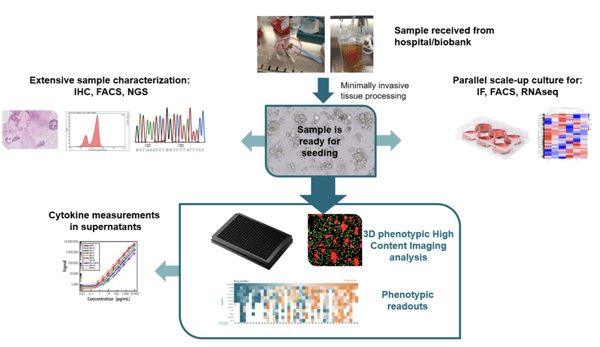
Contact us to discuss your 3D Ex Vivo Patient Tissue project
Features Applications Readouts
In recent years, the TME has been shown to play a crucial role in cancer progression and metastasis as well as treatment response. However, there has been a lack of research models that accurately represent the human TME. Challenges associated with traditional models include:
The 3D ex vivo patient tissue platform provides an alternative approach by keeping the complexity of the tumor (3D assay) and including the patient autologous TME into the assay.
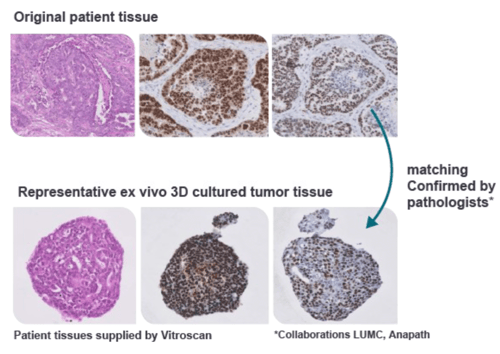
Make better informed decisions about progressing compounds/therapeutic candidates into the clinic with the most clinically relevant ex vivo patient tissue platform.
poor (x), medium (~), high (√)
| Attributes | 2D cultures | Organoids | In vivo | Ex vivo |
|---|---|---|---|---|
| Physiological complexity | X | ~ | ||
| Throughput | X | ~ | ||
| Translatability to the clinic | X | ~ | ~ |
Contact us to discuss your 3D Ex Vivo Patient Tissue project
Ex vivo testing protocols established for a wide range of solid tumors representing the complexity of the TME and preserving patient tumor biology.
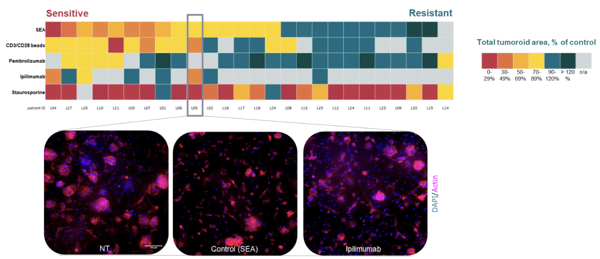
Heatmap showcasing the differential response of 25 NSCLC patient samples to a set of SoC treatments including pembrolizumab and ipilimumab.
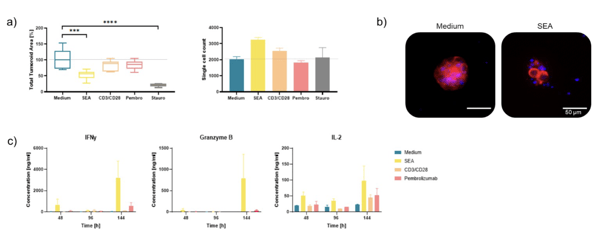
a) Ex vivo tumor tissue from NSCLC patient responded strongly to SEA and moderately to CD3/CD28 beads and pembrolizumab treatment (6 days).
b) NSCLC tumoroid in medium only and SEA conditions (DAPI: nuclei; TRITC: actin) c) HCI response measurements were confirmed by cytokine analysis
at various timepoints (2, 4, and 6 days). The increase in IFNgamma, Granzyme B, and IL-2 upon IO treatments is supporting the
immune-mediated killing mechanism
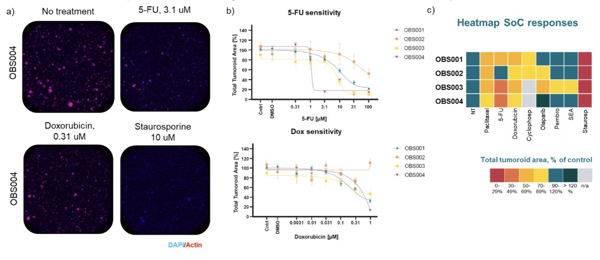
a) Example images of OBS004 response to different treatment conditions. b) Patient-specific sensitivity (4 breast cancer samples) to a
6-point concentration curve of 5-FU and doxorubicin c) Heatmap illustrating SoC response to a set of standard of care drugs.
Multiple readouts available including:
Our ex vivo patient tissue platform is one of several high-content imaging-based screening assays offered. These include:
Contact us to discuss your 3D Ex Vivo Patient Tissue project.
Tell us how we can help
© 2025 Crown Bioscience. All Rights Reserved.
Privacy Policy | Imprint | Terms of Service | Privacy Preferences


© 2025 Crown Bioscience. All Rights Reserved. Privacy Policy
2025-06-24
2021-10-25
site_page
EVPT